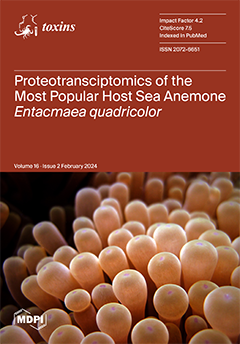Probiotics and their bacteriocins have increasingly attracted interest for their use as safe food preservatives. This study aimed to produce soft white cheese fortified with
Lacticaseibacillus MG847589 (
Lb. paracasei MG847589) and/or its bacteriocin; cheese with
Lacticaseibacillus (CP), cheese with bacteriocin (CB), and
[...] Read more.
Probiotics and their bacteriocins have increasingly attracted interest for their use as safe food preservatives. This study aimed to produce soft white cheese fortified with
Lacticaseibacillus MG847589 (
Lb. paracasei MG847589) and/or its bacteriocin; cheese with
Lacticaseibacillus (CP), cheese with bacteriocin (CB), and cheese with both
Lacticaseibacillus and bacteriocin (CPB) were compared to control cheese (CS) to evaluate their biopreservative and anti-mycotoxigenic potentials for prolonged shelf life and safe food applications. The effects of these fortifications on physiochemical, microbial, texture, microstructure, and sensory properties were studied. Fortification with
Lacticaseibacillus (CP) increased acidity (0.61%) and microbial counts, which may make the microstructure porous, while CPB showed intact microstructure. The CPB showed the highest hardness value (3988.03 g), while the lowest was observed with CB (2525.73 g). Consequently, the sensory assessment reflected the panelists’ preference for CPB, which gained higher scores than the control (CS). Fortification with
Lb. paracasei MG847589 and bacteriocin (CPB) showed inhibition effects against
S. aureus from 6.52 log
10 CFU/g at time zero to 2.10 log
10 CFU/g at the end of storage,
A. parasiticus (from 5.06 to 3.03 log
10 CFU/g), and
P. chrysogenum counts (from 5.11 to 2.86 log
10 CFU/g). Additionally, CPB showed an anti-mycotoxigenic effect against aflatoxins AFB
1 and AFM
1, causing them to be decreased (69.63 ± 0.44% and 71.38 ± 0.75%, respectively). These potentials can extend shelf life and pave the way for more suggested food applications of safe food production by fortification with both
Lb. paracasei MG847589 and its bacteriocin as biopreservatives and anti-mycotoxigenic.
Full article






